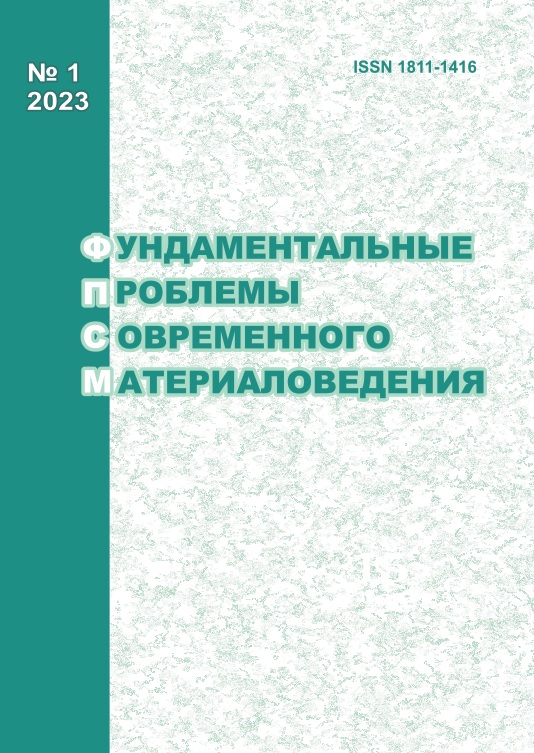INTERNAL STRESSES AND THEIR SOURCES IN NICKEL AFTER EQUAL-CHANNEL ANGULAR PRESSING
10.25712/ASTU.1811-1416.2023.01.001
Keywords:
equal-channel angular pressing, amplitude of internal stresses, sources of internal stresses, contour, curvature-twist of crystal lattice, grain, grain joints, grain boundary, particleAbstract
The internal structure of grains, the amplitude of internal stresses and their sources in ultrafine grained technically pure nickel obtained by equal-channel angular pressing deformation were studied by the method of transmission electron microscopy. At equal-channel angular pressing the samples were subjected to shear deformation by compression along two intersecting channels of equal diameter at an angle of 1200 at temperature T = 400 0C without intermediate annealing. The number of passes n = 4. It was found that equal-channel angular pressing led to the formation of particles of secondary phases in ultrafine grained nickel with nanometric size and localized inside, on the boundaries and at the joints of grains. The sources of internal stresses are revealed and their amplitude is determined. Determination of the amplitude of internal stresses was based on the determination of the curvature-torsion of the crystal lattice by bending extinction contours. It was found that the sources of internal stresses are: grain junctions in which particles of secondary phases are present or absent; grain boundaries in which particles of secondary phases are present or absent; particles located on dislocations within grains; and, finally, dislocation structure in grains or parts of grains in which particles of secondary phases are absent. It has been found that internal stresses from all sources cover all grains regardless of their internal structure and are predominantly elastic in nature. This means that equal-channel angular pressing led mainly to the elastic distortion of the nickel lattice.











 Journal «Fundamental’nye problemy sovremennogo materialovedenia / Basic Problems of Material Science»
Journal «Fundamental’nye problemy sovremennogo materialovedenia / Basic Problems of Material Science» This work is licensed under a
This work is licensed under a 
